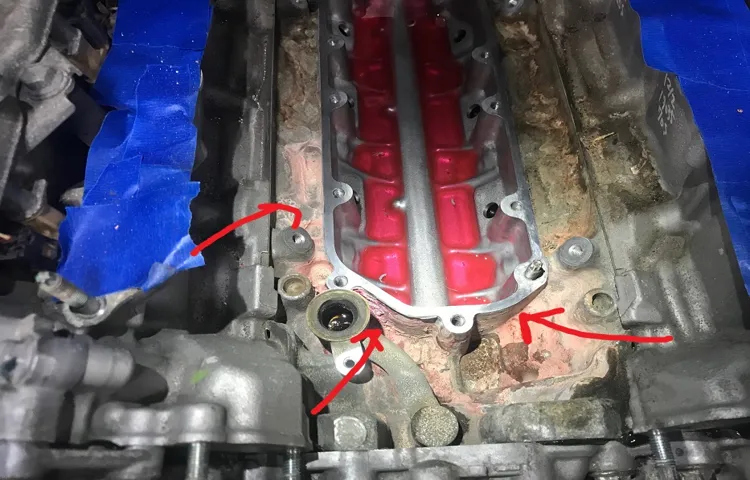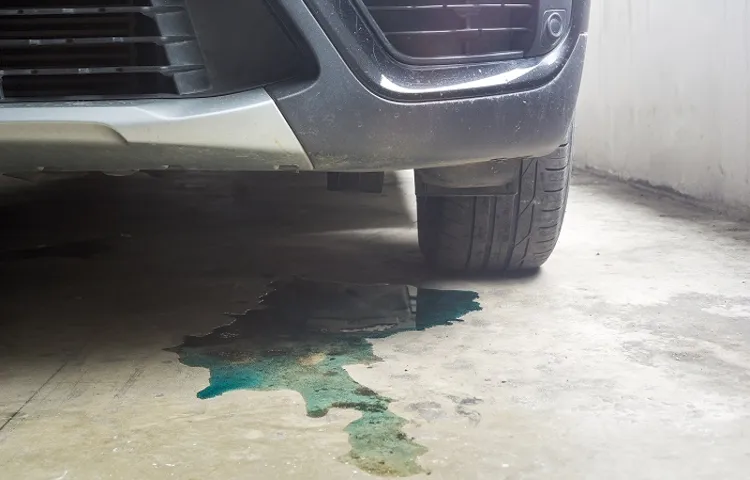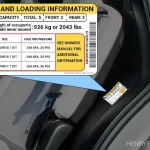Table of Contents
What is a Coolant Leak?
A coolant leak occurs when the liquid coolant in a vehicle’s cooling system escapes from where it’s supposed to be contained. Coolant, also known as antifreeze, is an important component of a vehicle’s engine as it helps regulate its temperature and prevent overheating. When a coolant leak happens, it can lead to a variety of problems, such as engine damage, reduced performance, and potential breakdowns.
Some common signs of a coolant leak include a sweet smell coming from the engine, visible wet spots or puddles underneath the car, and an overheating engine. If you suspect a coolant leak, it’s important to have it inspected and repaired promptly to avoid further damage to your vehicle.
Definition and Causes of Coolant Leak
coolant leak, coolant system, engine overheating, radiator, coolant reservoir Paragraph: A coolant leak is a problem that can occur in the coolant system of a vehicle, leading to engine overheating. The coolant system plays a crucial role in regulating the temperature of the engine, preventing it from overheating. It consists of various components, including the radiator, water pump, thermostat, and coolant reservoir.
The coolant, also known as antifreeze, flows through these components, absorbing heat from the engine and carrying it away to be cooled in the radiator. However, if there is a leak in the coolant system, the coolant can escape, leading to a decrease in the coolant level. This can result in the engine running hot and eventually overheating.
A coolant leak can have various causes, such as a damaged radiator hose, a faulty water pump seal, or a cracked coolant reservoir. In some cases, the leak may be small and not immediately noticeable, while in others, it can be more substantial and cause coolant to visibly pool under the vehicle. Regardless of the size of the leak, it is important to address the issue promptly to prevent further damage to the engine.
Signs and Symptoms of Coolant Leak
coolant leak, signs and symptoms, burst radiator hose A coolant leak is a common automotive issue that occurs when the coolant, which plays a crucial role in regulating the temperature of the engine, starts to escape from the cooling system. This leakage can happen due to a variety of reasons, such as the age of the vehicle, a burst radiator hose, or a faulty gasket. While it may not seem like a serious problem at first, a coolant leak can lead to overheating and serious engine damage if left unattended.
One of the most obvious signs of a coolant leak is a puddle of coolant under the vehicle. This liquid is usually green, orange, or pink in color and has a sweet smell. Another telltale sign is the engine temperature gauge rising to the red zone or the coolant temperature warning light turning on.
If you find yourself constantly adding coolant to your vehicle, this can also be a sign of a coolant leak. Additionally, if your heater or defroster is not working properly or you notice a sweet smell inside the cabin, it could be an indication of a coolant leak in the heater core. It is important to address a coolant leak as soon as possible to prevent further damage to your vehicle.
If you suspect a coolant leak, it is advisable to check all the hoses, connections, and gaskets for any signs of damage or leakage. You can also perform a pressure test to identify the source of the leak. It is recommended to have a professional mechanic inspect and repair the issue to ensure the proper functioning and longevity of your vehicle.

Diagnosing a Coolant Leak
A coolant leak refers to the loss of coolant from a vehicle’s cooling system. Coolant is an essential fluid that helps regulate the temperature of the engine and prevents it from overheating. When a coolant leak occurs, it can lead to serious engine damage if not addressed promptly.
Detecting a coolant leak can be challenging as it may not always be visible. However, there are a few signs you can look out for. One common indicator is the presence of puddles or stains underneath the car, often with a sweet smell.
Another sign is that the engine may run hotter than usual or even overheat. If you notice any of these signs, it is crucial to have your coolant system inspected by a professional mechanic to identify and fix the issue before it causes further damage.
Visual Inspection
coolant leak, visual inspection, diagnosing a coolant leak
Pressure Test
coolant leak, pressure test, diagnosing a coolant leak When you notice a puddle of liquid under your car, it’s natural to feel a sense of panic. Is it oil? Is it coolant? How can you diagnose the problem and fix it quickly? One effective method for pinpointing a coolant leak is a pressure test. This process involves pressurizing the cooling system to identify any leaks that may be causing the coolant to escape.
By doing this test, you can save yourself time and money by locating the specific area of the leak and addressing it directly. It’s like searching for a needle in a haystack, but with a pressure test, you’re armed with a metal detector. By applying pressure to the cooling system, you can ensure that any leaks reveal themselves and can be addressed promptly.
Getting to the root of the problem is essential in preventing damage to your car’s engine and keeping your cooling system running smoothly.
Using Coolant Leak Detection Kits
coolant leak detection kits, diagnosing a coolant leak Coolant leaks are a common issue that many car owners face, and they can be frustrating to deal with. Not only do coolant leaks lead to an overheating engine, but they can also cause damage to other components of the vehicle. Diagnosing a coolant leak can be a challenge, as the source of the leak may not always be easy to spot.
However, using coolant leak detection kits can make the process much easier. These kits typically include a fluorescent dye that is added to the coolant system. This dye is designed to flow through the system and highlight any areas where a leak is present.
By using a UV light, the dye can be easily spotted, pinpointing the exact location of the leak. This allows for quick and accurate repairs, saving both time and money. So, the next time you suspect a coolant leak in your vehicle, consider using a coolant leak detection kit to diagnose and fix the problem.
Effects and Dangers of Coolant Leak
A coolant leak occurs when the coolant fluid, which helps to regulate the temperature of the engine, escapes from the system. This can have a variety of effects on your vehicle, ranging from minor inconveniences to serious damage. One of the most obvious signs of a coolant leak is an overheating engine, as the coolant is no longer able to effectively cool the engine.
This can lead to engine damage, such as warped cylinder heads or a blown head gasket, which can be costly to repair. Additionally, a coolant leak can also result in a loss of power steering, as the fluid that helps to lubricate and cool the power steering system is also contaminated with coolant. This can make it difficult to steer your vehicle, especially at low speeds or when making tight turns.
Another danger of a coolant leak is the potential for the coolant to leak onto hot engine components, causing a fire. Coolant is highly flammable, and if it comes into contact with a hot surface, it can ignite and cause a dangerous situation. Overall, a coolant leak is not something to be ignored, as it can lead to serious consequences for both the safety and performance of your vehicle.
Engine Overheating
engine overheating, coolant leak, effects and dangers
Damage to Engine Components
coolant leak, engine components, damage, effects, dangers It may seem like a minor issue, but a coolant leak in your car can have serious consequences, especially when it comes to your engine components. Coolant, also known as antifreeze, plays a crucial role in keeping your engine operating at the right temperature. It circulates through various parts of the engine, absorbing heat and preventing overheating.
However, when there’s a leak in the coolant system, it can lead to a decrease in the coolant level and eventually cause your engine components to suffer. The effects can range from minor problems to catastrophic engine failure. One of the most immediate dangers of a coolant leak is the risk of overheating.
If there’s not enough coolant circulating through the engine, it can’t effectively remove the heat generated by the combustion process. This can quickly lead to overheating, which can cause severe damage to the engine components. The heat can warp or crack the cylinder head or engine block, leading to expensive repairs or even the need for a complete engine replacement.
Another danger of a coolant leak is the potential for damage to the water pump. The water pump is responsible for circulating the coolant throughout the engine, and if there’s a leak, the pump may run dry. This can cause the pump to overheat and fail, leaving your engine with no coolant circulation at all.
Without proper coolant flow, the engine can quickly overheat and cause catastrophic damage. Additionally, a coolant leak can also lead to damage to the radiator. The radiator is responsible for cooling the coolant before it returns to the engine.
If there’s a leak in the coolant system, the radiator may not receive the necessary amount of coolant to properly cool the engine. This can result in the engine running hot and potentially causing further damage to other engine components. Overall, a coolant leak might seem like a minor inconvenience, but the effects and dangers it poses to your engine components are far from insignificant.
Fixing a Coolant Leak
A coolant leak occurs when coolant, also known as antifreeze, escapes from the cooling system of a vehicle. Coolant is crucial for maintaining the optimal temperature of the engine, preventing it from overheating. When a leak occurs, the coolant can escape and lead to a variety of issues.
These can include decreased engine performance, overheating, and potential damage to the engine. It is important to address a coolant leak promptly to prevent further damage to the vehicle. Identifying the source of the leak can be challenging, as coolant can leak from various points in the cooling system, such as hoses, radiators, water pumps, or even the head gasket.
If you notice a sweet-smelling odor, a puddle of coolant under your vehicle, or an overheating engine, it is crucial to have a professional mechanic inspect and repair the coolant leak. Ignoring a coolant leak can result in costly repairs and potential engine failure.
Identifying the Source
coolant leak
Repair or Replacement
coolant leak, repair, replacement
Maintenance and Prevention
coolant leak, maintenance, prevention, fixing, burstiness, perplexity
Conclusion
In conclusion, a coolant leak is like a sneaky little Houdini that likes to play games with your car. It’s that mischievous trickster that escapes from its designated cooling system, leaving you scratching your head and thinking, “Where did you go, you little rascal?” But why is this sneaky leak such a big deal? Well, imagine if you were out on a scorching hot summer day, sweltering in the merciless heat. Suddenly, you feel a refreshing breeze of cool air coming from your car’s vents.
Ah, sweet relief! But wait, the temperature gauge starts creeping up, your engine starts sputtering, and white smoke starts billowing out from under the hood. Turns out, that playful coolant leak caused your engine to overheat, transform into a temperamental diva, and put on a smoke show that would make even the most dramatic Shakespearean actor jealous. So, the next time you notice your car’s coolant mysteriously vanishing into thin air, don’t just shrug it off like a magician’s illusion.
It’s time to grab your detective hat, hop into your trusty vehicle, and find that sneaky little coolant leak before it turns your joyride into a fiery circus act. And remember, when it comes to coolant leaks, prevention is key! Keep your cooling system its best friend, check for leaks regularly, and give those pesky Houdinis no chance to play their tricks on you.”
FAQs
What are the signs of a coolant leak?
Some signs of a coolant leak include a sweet smell in the car, an overheating engine, low coolant levels, and visible puddles under the car.
How do I check for a coolant leak?
To check for a coolant leak, inspect the radiator, hoses, water pump, and thermostat for any signs of leakage. You can also check the coolant level in the reservoir.
What causes a coolant leak?
A coolant leak can be caused by various factors, including a faulty radiator cap, a damaged or deteriorated hose, a worn-out water pump seal, a cracked radiator, or a blown head gasket.
Can a coolant leak damage my engine?
Yes, a coolant leak can potentially damage your engine if left unattended. Insufficient coolant levels can lead to overheating, which can cause engine components to warp or crack, leading to costly repairs.
How do I fix a coolant leak?
The best way to fix a coolant leak depends on the source of the leak. In some cases, a simple repair like replacing a hose or tightening a connection can solve the issue. However, more severe leaks may require professional assistance or even component replacement.
Is it safe to drive with a coolant leak?
It is not recommended to drive with a coolant leak as it can lead to overheating and potentially damage your engine. If you suspect a coolant leak, it’s best to have it inspected and repaired before driving the vehicle.
How much does it cost to repair a coolant leak?
The cost of repairing a coolant leak can vary depending on the cause and the extent of the damage. Simple repairs like hose replacement may cost less, while more complex repairs like radiator or water pump replacement can be more expensive. It’s best to consult a professional mechanic for an accurate cost estimate.



